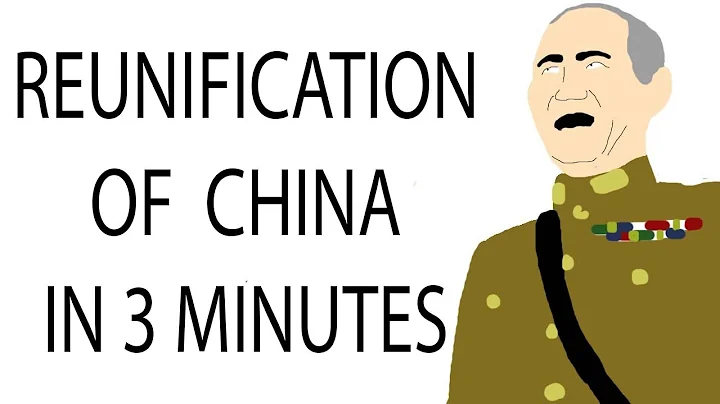At the end of 1928, Chiang Kai-shek became a national political figure. Having made his fortune in the army, he deeply understood the importance of the army. At this time, He Yingqin, the former helmsman of the Chiang Clan's troops, lost his military power because he cooperated with the Guangxi Clan to force Chiang to step down.
Among the four armies in the Second Northern Expedition, Chiang Kai-shek could only control the First Army of which he was the commander-in-chief. Liu Zhi’s First Army consisted of Liu Zhi’s 1st Army and Gu Zhutong’s 9th Army. (Chiang Kai-shek's old army), Zhang Fakui's Guangdong clique's Miao Peinan's 4th Army, and the Guizhou clique's Yang Shengzhi's 10th Army. Chen Tiaoyuan's 2nd Army (Hunan Clan Chen Tiaoyuan 37 Army + Zhejiang Clan Chen Miao's 26th Army + Fujian Clan Cao Wanshun's 17th Army), He Yaozu's 3rd Army (Hunan Clan He Yaozu's 40th Army + Henan Clan Zhang Keyao's 33rd Army + Hubei Army Xia Fighting exercise 27th Army), Fang Zhenwu's 4th Army (Zhang Zongchang's surrender force), and reserve commander Zhu Peide's 3rd Army. It can be seen that Chiang Kai-shek's direct troops are very few, and they are exactly the same as his government-a small horse pulling a big cart.
What Chiang had to do at this time was how to eat the non-direct troops in the First Group. In August 1928, the national troops were reorganized and the army was reorganized into divisions. Let us take a look at how Chiang Kai-shek annexed the miscellaneous troops and developed his own army step by step.

1927. In September Huangpu instructor Chen Dao squeezed out Zhou Fengqi to become the commander of the 26th Army of the Zhejiang Department and was organized into the 6th Division. Become Chiang Kai-shek's direct troops.
1928. In April, He Yaozu was dismissed due to the Jinan Incident. In August, the 40th Army was reorganized into the Zhu Shaoliang 8th Division and became Chiang's direct troops.
The 17th Army of the Fujian Clan was organized into the 11th Division, and Chen Cheng entered the takeover and reorganization, becoming the army that Chen Cheng started.
html The 133rd Army was merged into Liu Zhi's 1st Division, and the former commander Zhang Keyao was made the deputy commander without authority.
Chen Tiaoyuan successively served as chairman of Shandong and Anhui provinces and left the military. The 46th and 47th divisions formed by his troops also became Chiang Kai-shek troops.
1928. In November, two divisions of the 10th Army declared mutiny in Shandong and were later dispersed and reorganized; Yang Shengzhi's division was reduced to the 29th Brigade.
1929. In April, Fang Zhenwu's department was changed to the 10th Army, and Fang Zhenwu was appointed chairman of Anhui Province; in September, Chiang Kai-shek deceived Fang Zhenwu into being imprisoned in Nanjing. His 10th Army was organized into the 45th Bao Gang Division, which was later merged into the 10th Division of Wei Lihuang.
In September 11929, Zhang Fakui returned to China to re-command the 4th Cantonese Army to fight against Chiang Kai-shek, and was defeated in Guangxi; after the Central Plains War in December 1930, it was reduced to Wu Qiwei's 12th Division (later renamed the 90th Division); in May 1933, the 59th Division was formed with Chen Cheng They were jointly organized into the 4th Army and became a Chiang Kai-shek force; they pursued the Red Army all the way to Sichuan. They left Southwest China only after the outbreak of the Anti-Japanese War and went to Shanghai to participate in the war.
Xia Douyan's 27th Army was organized into the 13th Division. He made contributions in the Central Plains War. In April 1932, Xia Douyan became the chairman of Hubei Province, and the 13th Division became a Chiang Kai-shek force.
Summary: The First Army has 4 armies in total. Liu Zhi's 1st Army, Gu Zhutong 9th Army are the troops of Chiang Kai-shek. Chen Dao's 26th Army was transformed into a direct lineage in the early stage; He Yaozu was dismissed from his post during the Northern Expedition, and the 40th Army directly took over , the weaker 33rd Army was directly annexed; Fang Zhenwu, Chen Tiaoyuan, and Xia Douyan were all promoted to provincial chairmen and left the army; the 4th Army rebelled and ran away; Zhu Peide took the initiative to hand over the 3rd Army.














![[ENG SUB] 真相如此残忍,小妾被正妻刺激后寻死,正妻及时相救《当家主母 Marvelous Women》Clip 蒋勤勤 张慧雯 杨蓉(欢娱影视) - DayDayNews](https://i.ytimg.com/vi/IpeBSSdnZa8/hq720.jpg?sqp=-oaymwEcCNAFEJQDSFXyq4qpAw4IARUAAIhCGAFwAcABBg==&rs=AOn4CLAZ_Xhz9rIPdTFeS3m0iBxkHJljeQ)






